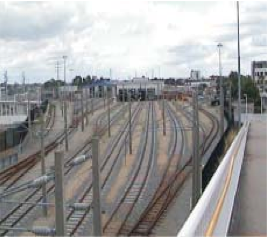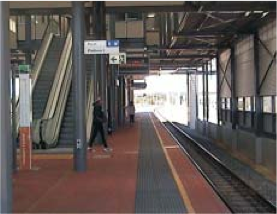Global Rail Technologies off the Shelf
As member of ‘Study group on Alternative systems of Urban Transport’ set up in 1985 at the instance of Late Shri Rajiv Gandhi ,the then prime minister of India and whose report was submitted in 1987, we had occasion to cost various urban transport systems. The main conclusions were.
- The urban transport systems should lose at the fare box recovery to be viable.
- In case total intangible factors are considered the Urban Transport Systems are one of the most profitable projects with returns of more than 100 %.
-
It was also realized that in Indian context the pocket benefitting from the urban transport system is different from the one paying for the systems. For integration of the two the group recommended setting up of Urban Transport Metropolitan Authorities (UTMA) for implementations of the Urban Transport Systems.
The recommendations of the group were accepted by the Government of India and this followed the setting up of Delhi Metro Rail Corporation (DMRC) for Delhi Metro and similar bodies for Bangalore, Chennai, Hyderabad, Jaipur etc.
A number of New Rail Based urban transport systems are coming up around the world. During my visit to USA in Sept- October 2012 and City of Perth Western Australia in October – November 2012, I had occasion to visit a number of urban transport systems and discuss the opportunities and challenges in current context with various Stakeholders in these cities. Following are the systems visited.
- Perth Rail based Urban Transport System (operated by Perth transport authority) – installations visited-EMU Maintenance Shed, OHE Depot, Control centre, Traction sub- stations and OHE Maintenance Depots.
- Washington DC Metro. – installations visited included New extension of Orange line under PPP to AirPort project site with work on Track, OHE , Traction Substations under construction, EMU Maintenance Shed, OHE Depot, Control Centre, Traction Sub-Stations and OHE Maintenance.
- Mono Rail System worked as urban Transport System in Disneyland Los Angeles which completed 50 years of Successful working in 2009.
- Airport Metro line of Chicago.
- Cable car systems of San Francisco.
- Mono Rail system of Las Vegas.
- Some of the systems like Perth Rail Based urban Transport system (Operated by Perth transport authority) are excellent examples in Indian Context on making a cost effective and viable system for India.
Excellent points of Perth Rail Based Urban Transport System:
Built on Surface
Bulk of the alignment has been planned on Surface thereby greatly saving on project cost. Taking system length as 200 KM for 5 lines and assuming per Kilometre additional cost of Viaduct/ underground as $ 5 Million (a conservative estimate) they have saved approximately $ 1 Billion from the project cost. Since in Urban transport fare box recovery is a Challenge in order to provide commuters a low cost option this saving is valuable for long term viability and further expansion of the project.

A view of OHE on surface alignment along Central Verge of Freeway with Concrete masts and Ballasted Track. Use of inexpensive grade separation
Selection of 25 KV AC systems as system of Electric Traction.
Delhi Metro Railway (DMRC) was one of the first systems in the world to have selected 25 KV AC system in preference to 750 Volt third rail DC system. This has provided further economy by saving cost of about 40 additional DC Traction Systems. Also being above ground the maintenance is easier. While DMRC 25 kV line was opened in 2002, Perth metro on 25 KV AC system started working about a decade earlier in 1993.
Selection Of 1057 MM Gauge
Along with Japan and Malaysia, Perth Rail Based Urban Trans port systems are the only system to have adopted 25 KV AC system on 1057 MM Metre Gauge. Since bulk of the alignment of Trans Perth is on the Central Verge a narrower gauge has given the advantage of requirement of lesser space.
Building along central verge of Freeways
Since bulk of the system has come along Central Verge of Freeways it has given convenience in Land Accusition, easy access in case of accidents and emergencies and easy transfer to Bus/other road Based systems. Adoption of these features in Indian context is bound to give advantage in cost resulting in construction of more Rail Based Urban Systems and extension of Metro rail in B class cities also. Similar features are also visible in other systems as follows:
Other Observations
- In Indian context where cities extend far out to suburban centres a Regional Rail System Electrified on Surface will be cost effective and will help decongest cities.
- A much leaner Mono Rail system as provided in Disneyland Los Angeles which completed 50 years of successful working in 2009 will be more competitive in cost for feeder routes.
- A number of Street Car systems are making a comeback. As an example following system has been recommended by Perth city for their Feeder System.
Ground-level street pickup
This system is at present working in Bordeaux, France. The new tramway in Bordeaux makes use of a novel system (Alstom’s APS) in visually sensitive areas comprising about 10km of the initial 24.5km network. A rail is electrically divided into short sections, and these are energized only when totally shielded beneath the tram itself. The vehicles also carry batteries to ensure continued operation in the event of partial or total system failure. There have been many such failures, though the Bordeaux operator recently decided against replacing the system with overhead line.
Edinburgh has investigated the use of APS on its proposed tram route, but currently does not intend to take it up. APS is a proprietary technology and therefore may not be available from other suppliers, at present.
Washington Metro Orange line extension to airport
This Orange line extension project is on Third Rail 750 Volt DC system for interoperatability with existing system. However while the existing orange line is underground this extension is coming up on viaduct with a significant portion on surface with grade separation achieved by fencing of track from the road.
In Chicago the airport line is on surface built on the central verge of Road like Perth Rail Based Urban Trans port system. Thereby a large part of the cost invested in construction of Viaduct is saved.
Indian scenario
In India Kolkatta Metro Railway, which was built between 1972 to 2002, was mainly in underground Sections with a small stretch (Dum-Dum –Belgachia and near Tolly Ganj) on Surface. However Tolly Ganj New Garia extension constructed between 2006 to 2011 is totally on Elevated sections.
The first line of Delhi Metro from Shahadara to Central secretariat was partly on Surface and mainly Underground.
After that very few underground sections have been added and these are also very important areas like Connaught Place and Central Secretariat. Mainly, the construction is on via ducts. The method of elevated construction is followed by other metro Systems being constructed.
Relative costs of Rail Based Systems
- On Surface including arrangements of Grade separation Rs 12 cr. per KM
- Additional Cost of Viaduct Rs 30 cr. per KM
- Additional Cost of Tunnels Rs 200-140 cr. per KM
Therefore in case metros can be built on surface like Perth Metro Railway system, substantial saving can result.
Other Benefits of Building on surface
- Maintenance is easy as no problem of access on Viaduct or underground.
- In case of accidents rescue can be fastest.
- If the alignment is on surface space above 5.5 Meters can be used for commercial and residential use while it is not often possible in case of construction on viaducts. If the buildings (Commercial as well as Residential) are on/Above Railway alignment maximum trips can be brought on Railways to save Energy and Carbon emission. Also the crowding on roads can be minimised.
- In case of Viaducts the area under the viaduct can only be used for road to a limited extent and no habitation is possible due to safety reasons.
- The viaduct structure is a dynamic structure requiring constant maintenance. It was always known but highlighted by events of New Delhi air port line. In case of underground construction ventilation and constant requirement of Pumping out of water to avoid flooding add to the maintenance cost.
- Mumbai, Kolkatta and Chennai Suburban lines, Chicago line to airport are other examples of successful Urban Railway construction on surface.
- As viaducts has to be designed for axle loads of the order of 16-20 tonnes these are heavy structures. If the alignment is laid on surface the residential / commercial structures built on Vertical space above, have to take much less load and hence can be very lean and economical.
- In case of viaduct the heaviest component i.e. Railways are being taken above and lighter vehicles like cars/ trucks are on surface resulting in an inefficient solution from energy point of view.
The way forward
Construction of Rail Based Urban and Suburban systems the rule should be to take it on surface. The construction on Viaduct / tunnel should be an exception. A road or a Railway system creates artificial divisions in city.
Thus to minimise these divisions the Road and Railway should be integrated in one corridor. The Railways should be on the central verge so that in addition to one lane width being provided for central verge only one additional lane of about 7 meters is required for a Double Line Rail Based system.
New Cities, along Metropolitan areas are coming up. In urban planning a Rail corridor should be mandate rally be left so that whenever planned the Railway can be constructed on Surface. On the Highways being built by NHAI space of two lanes on the central verge should be left for a Railway system.
As Railways take only one third of the right of way of roads for similar carrying capacity, this will lead to economy of land use.
In future when oil is going to be scarce the rail corridor can be expanded to transfer traffic on electricity based rail transport where the electricity can be derived from Green sources also.
About the Author: Mr. Vijay Dutt is a retired IR technocrat. He is an expert on Railways and Urban Mobility. Recently, he visited the US and Australia and found that there are several State-of-the-art technologies that can not only improve efficiency of Indian Railways but substantially bring down the cost of projects. Sharing his experiences in the first hand account he emphasizes that the urban modes of transport can also benefit from the experience of these countries.
You may also like:
- Electrical Multiple Unit – a best mode of transport
- Why Tramways not making headway in planned cities?
- Mass Rapid Transit System –Suburban
- An alternative to Rapid Rail Transport Corporation for transport need…
- Addressing Safety and Security issues relating to EMU Sub-urban Services
- MRTS-Bangalore Sub-urban Rail Corporation




